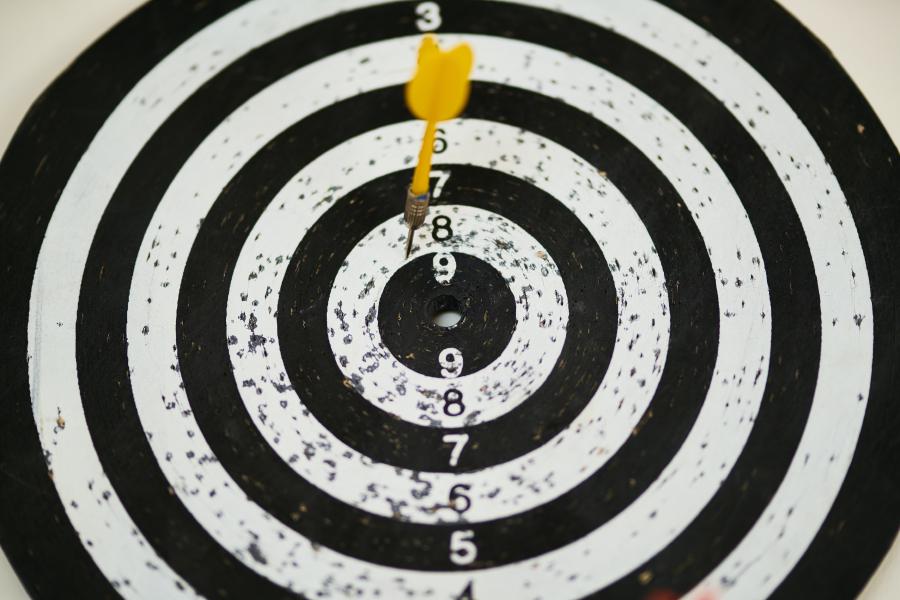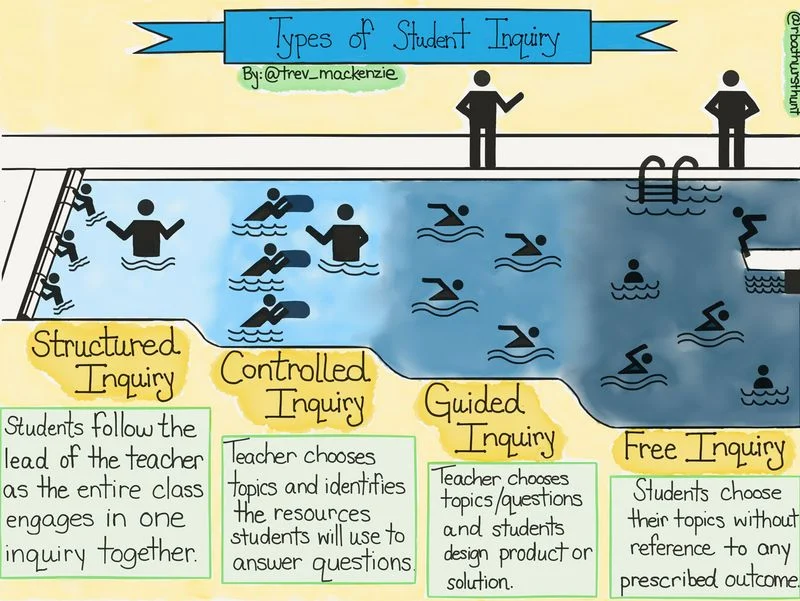
For a personalized learning environment to be effective, learners need to have some degree of agency. Agency refers to their ability to feel like they have control over what is going on around them. More specifically, it is their ability to set lofty goals, forge paths towards those goals, reflect and revise those paths and goals, and be able to reach those goals (Poon, 2018).
The following are a few strategies that educators can use to promote learner agency and facilitate a more personalized approach to learning.
Goal Setting

The most important skill related to agency is being able to set goals. This is something that many people take for granted, but without it the rest is impossible. As with any skill, goal setting is something that is something that we learn over time so educators need to take the time to discuss the process.
Goal setting is a strategy that involves the educator guiding the student though a reflection of their current ability level, and then having them set goals for where they’d like to see their ability level after a set amount of time. The William & Ida Friday Institute for Educational Innovation (n.d.) makes the case for encouraging goals setting for three reasons. The first reason is that it allows the student to take the lead and decide for themself what they should care about at school as opposed to being told what to care about. The second reason is that setting goals makes the students more invested in what they are trying to achieve, so they are more likely to persevere when their learning path becomes difficult. The third reason is that it forces the student to think about their own strengths and weaknesses so that they can determine if they will be able to reach the goals they have set for themself. Goal setting is a cornerstone of learner agency, and asks the student to think deeply about what they want to get out of their learning experience based on their current ability level.
According to the William & Ida Friday Institute for Educational Innovation (n.d.), to implement goal setting teachers should:
- Teach students how to develop SMART goals
- Encourage students to record and monitor their goals in some form of journal
- Meet with students one-on-one to talk about their goals and how they are progressing
Inquiry-Based Learning

Inquiry-based learning is a strategy that starts with sparking the student’s curiosity, and then leveraging that curiosity to develop learner agency and ownership. MacKenzie (2016) defines four different levels of student inquiry: Structured, Controlled, Guided, and Free. These levels serve as a guide to help educators slowly shift control from themselves to each individual student, with the final result being students choosing topics without a predefined reference or goal (MacKenzie, 2016). Not only does inquiry-based learning help develop agency by getting the students invested in wanting to know more about their question, but it also provides a way for educators to know what their students truly want to know about and then utilize that information to make connections with the curriculum.
According to MacKenzie (2016), to implement inquiry-based learning teachers should:
- Model enthusiasm and curiosity for the students while you work through the inquiry process
- Ensure there is an appropriate amount of scaffolding based on the student’s experience with inquiry
- Focus on the process of learning more than the product of learning
- Have students share what they have learned with the class
Learning Pathways

A learning pathway is a curriculum map that has been broken down into chunks so that students can see where they have been and where they are going. Educators can develop multiple different pathways for each subject or topic, and then let the students choose which pathway will work best for them. Alternatively, educators could work with students individually to design a personalized pathway based on that student’s interests. The pathways help develop learner agency by showing the student the learning process through seeing what they have already mastered, and then realizing what they need to do next (Education Review Office, n.d.); if you have ever learned a musical instrument before, method books are great representations of learning pathways. At the East Taieri School in New Zealand, all students receive learning pathways for reading, writing, and mathematics, and then they use highlighters to notate their progression: yellow for what they have mastery over, purple for what they can demonstrate mastery of, and green for their next steps (Education Review Office, n.d.). Learning pathways are great for learner agency as it allows the students to see what is coming up and reflect what has already happened; they are constantly in control of picking their work and their progress.
According to the Education Review Office (n.d.), to implement learning pathways teachers should:
- Working backwards through the curriculum to determine possible pathway options
- Make each step a single, manageable skill
- Include students in the design of assessments
- Meet one-on-one frequently to assess knowledge and progress
- Maintain a learning journal which catalogs the student’s journey with assessment data and learning goals.
Genius Hour

Genius Hour is a concept that stems from Google’s “20 percent time.” The premise is to encourage innovation and increase productivity by allowing each employee the chance to explore their passion during work hours, and Google has had great success with this policy with products, such as Gmail and Google Maps, having been developed during that time. Not only does Genius Hour give students time during the school day to explore their passion, but it helps develop learner agency. Students now feel like they control an aspect of the school, they get to imagine what they might know in the future, and then set a course to achieve what they want to know.
According to Fink (n.d.), to implement Genius Hour teachers should:
- Find an hour of time each week that you can commit to Genius Hour
- Have some degree of structure, including approving projects to ensure there will be enough depth
- Have a general timeline of when students should be researching, creating, and presenting
- Worry about the process more than the product
- Embrace the chaos
Makerspace

A makerspace is a location that has a collection of resources and tools dedicated to having students get hands-on and creative with their learning and then creating some kind of final product, be it digital or physical (Gonzalez, 2018). The premise behind a makerspace is that deeper learning and greater retention occurs through creative thinking - we know this from Bloom’s (Gonzalez, 2018). Not only does it allow the students to control what they produce, or explore other types of products, but it also helps them think critically about what
According to Gonzalez (2018), to implement a makerspace teachers should:
- Start building a makerspace by collecting the resources for one project at a time (keeping in mind that these resources could be digital or physical resources)
- Talk with the students about what is expected before entering the makerspace
- Work with the students to develop the guidelines and procedures for the makerspace
References
Education Review Office. (n.d.). Teaching approaches and strategies that work: 9. Developing student agency and motivation through effective teaching as inquiry. New Zealand Government. https://www.ero.govt.nz/publications/teaching-approaches-and-strategies-that-work/developing-student-agency-and-motivation-through-effective-teacher-practices-and-inquiry/
Fink, Jennifer L. W. (n.d.). Genius Hour in the Classroom. Scholastic. https://www.scholastic.com/teachers/articles/18-19/genius-hour-in-the-classroom-/
Gonzalez, Jennifer. (2018, May 20). What is the Point of a Makerspace? Cult of Pedagogy. https://www.cultofpedagogy.com/makerspace/
MacKenzie, Trevor. (2016, December 1). Bringing Inquiry-Based Learning Into Your Class. Edutopia. https://www.edutopia.org/article/bringing-inquiry-based-learning-into-your-class-trevor-mackenzie
Poon, Jennifer Davis (2018, September 11). Part 1: What Do You Mean When You Say “Student Agency”? Education Reimagined. https://education-reimagined.org/what-do-you-mean-when-you-say-student-agency/
Tom Vander Ark. (2015, December 21). 10 Tips for Developing Student Agency. Education Week. https://blogs.edweek.org/edweek/on_innovation/2015/12/10_tips_for_developing_student_agency.html
William & Ida Friday Institute for Educational Innovation. (n.d.). Planning for Success: Helping Your Students Set Their Goals. North Carolina State University. https://microcredentials-static.s3.amazonaws.com/353/1.Planning+for+Success+-+Helping+Your+Students+Set+Their+Learning+Goals.pdf